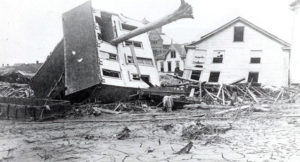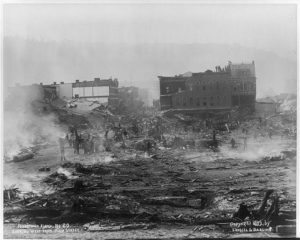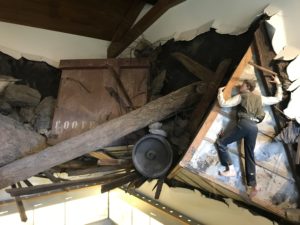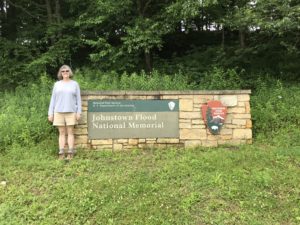 Last week, on our weekly adventure day, Tom and I visited three National Park sites in western Pennsylvania. Today I will write about the Johnstown Flood National Memorial. Tomorrow I will write about the Allegheny Portage Railroad. I will save the third, Flight 93 National Memorial, until we have time to visit again.
Last week, on our weekly adventure day, Tom and I visited three National Park sites in western Pennsylvania. Today I will write about the Johnstown Flood National Memorial. Tomorrow I will write about the Allegheny Portage Railroad. I will save the third, Flight 93 National Memorial, until we have time to visit again.
The Johnstown Flood National Memorial commemorates the lives of the 2,200 people who died when the South Fork dam broke on May 31, 1889. In 1889 Johnstown was the biggest steel producing city in the United States. The vibrant city sat at the forks of the Little Conemaugh and Stony Creek Rivers. Year after year, businesses in Johnstown narrowed the banks of the rivers to increase space for mills and factories. All the trees in the nearby hills were cut down. The town flooded on a regular basis and the townspeople had gotten used to flooded cellars.
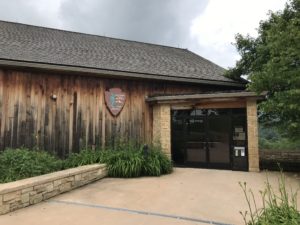
Up the mountain, the South Fork Fishing and Hunting Club roster formed a who’s who of the wealthy in Pittsburgh. They liked to retire to Lake Conemaugh in the summer to escape the heat and smoke of Pittsburgh. When the South Fork Club restored the dam in 1880, residents of Johnstown objected to the lack of discharge pipes and an effective spillway. The wealthy members ignored their concerns. They even lowered the height of the dam to make a better carriage road.
The rain that fell on May 31, 1889 topped off a very wet spring. The rivers and creeks were already at record levels. Hundreds of families in Johnstown headed for higher ground while they could still drive their wagons on the flooded streets.
By 11 a.m. on May 31, Lake Conemaugh reached the top of the dam and began spilling over the crest. At 3:10 p.m. the dam gave way and released 20 million tons of water. The debris created by this wall of water wiped out bridges, roads, train tracks, and towns. The water rolled the 14 miles to Johnstown in less than an hour. People are swept away and bodies were found as far away as Cincinnati. A debris wall forms at the Stone Bridge which held against the flood. At 6 p.m. the oil-soaked debris catches on fire and burns 80 trapped people to death. Almost 800 victims of the flood are never identified.
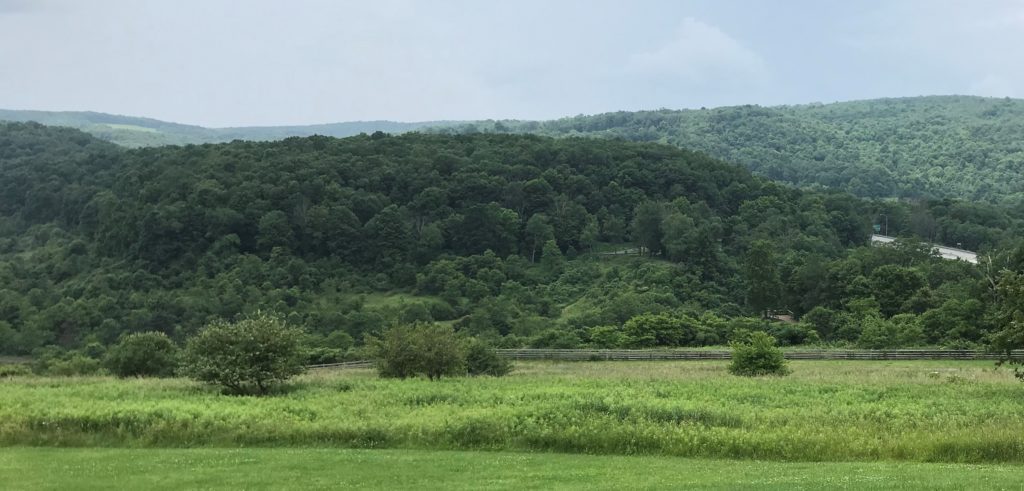
In the aftermath of the Johnstown Flood, people try to sue the South Fork Fishing and Hunting Club for damages. Because of the lack of liability laws, the wealthy are never forced to pay anything for the devastation caused by the breached dam.
Today the Johnstown Flood National Memorial remembers those who died. The Visitors Center tells the stories of the people who were affected by the flood. The movie is especially poignant with video footage from movies about floods interspersed with pictures taken of the flood damage. The movie is the only PG-13 National Park service movie I’ve seen. I was especially saddened by the rows of graves in pictures of Grandview Cemetery, where most of the victims are buried.
Tom and I watched the movie and spent some time in the Johnstown Flood Visitors Center. Then we stood on the hillside and looked at where the South Fork Dam used to be. You can also go through the South Fork Clubhouse and visit the Grandview Cemetery in Johnstown. Johnstown also has a Flood Museum located in the first Carnegie Library built in the United States.
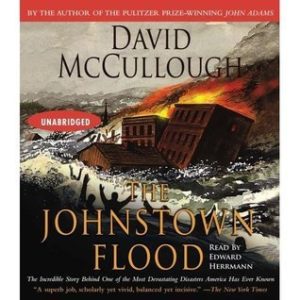 If you would like to know more about the Johnstown Flood but can’t get to the memorial, I recommend David McCullough’s excellent book on the subject.
If you would like to know more about the Johnstown Flood but can’t get to the memorial, I recommend David McCullough’s excellent book on the subject.

